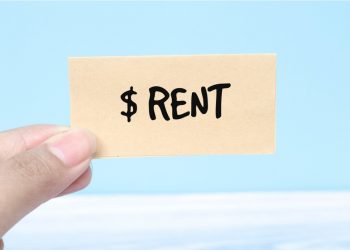 RISMEDIA, April 4, 2009-The Career College Association (CCA) released the results of a new commissioned survey, conducted by Harris Interactive, finding more than two out of three Americans either taking steps or considering steps to address their employment situation in the midst of the current economic turmoil. One silver lining in all the economic gloom appears to be the extent to which people may be “reinventing” their working lives with new educational programs and career skills. Over one-third of survey respondents (38%) indicated an interest in higher education and 32% of these “education seekers” say they are doing so in order to pursue a long-standing passion or an intellectual interest.
RISMEDIA, April 4, 2009-The Career College Association (CCA) released the results of a new commissioned survey, conducted by Harris Interactive, finding more than two out of three Americans either taking steps or considering steps to address their employment situation in the midst of the current economic turmoil. One silver lining in all the economic gloom appears to be the extent to which people may be “reinventing” their working lives with new educational programs and career skills. Over one-third of survey respondents (38%) indicated an interest in higher education and 32% of these “education seekers” say they are doing so in order to pursue a long-standing passion or an intellectual interest.
“A substantial percentage of Americans are looking at the current downturn as the opportunity to reinvent themselves with new skills, new interests and new professional pursuits, notwithstanding the distress that many in the workforce currently feel,” said CCA president Harris N. Miller. “Nobody likes to be out of a job, but this survey suggests that people who are unemployed, under-employed or simply anxious about their current employment prospects are using lemons to make lemonade.”
“Career re-inventors,” those pursuing a long-standing passion or interest, constituted 43% of 25-34 year olds in the education seeker group. Thirty percent of adults between the ages of 55-64 say the same, suggesting that many Americans have found the freedom – whether they wish it or not – to pursue long standing professional interests.
Other “silver lining” points of interest include:
-One of four high school graduates in the education seeker group likewise indicated career reinvention as their back to school motivation;
-The career re-inventor phenomenon is just as prevalent for those making less money than those with more income. Forty-three percent of earners at the $15,000-$35,000 salary range indicated career reinvention as their motivation, almost identical to the 44% of those earning between $75,000-$100,000 per year;
-Thirty-two percent of both those employed and unemployed indicate a reinvention motive for pursuing higher education;
-Career re-inventors are just as likely to be people with children at home as people with no children (31% versus 35%). Even care for young children doesn’t appear to stand in the way, with 35% of those with children under 10 years of age indicating that they will return to school to pursue a long-standing passion or intellectual curiosity;
Those in the western region are much more likely than those in the Midwest to pursue their career reinvention interests through higher education (43% versus 24%). Those in the South are closer to the Midwestern model, with 26% of education seekers motivated to seek higher education.
The survey finds that 33% of Americans describe themselves as either unemployed or under-employed, working fewer hours per week than they would like. An additional 12% describe themselves as either newly hired in the past six months but at lower salary or benefits or employed but anxious about remaining so in the near term. Just 23% of those surveyed say they are secure in their current position up to retirement.
Younger workers hit hardest
-Thirty-five percent of respondents in the 18-24 age group describe themselves as either unemployed or laid-off and another 23% say they are under-employed;
-Respondents in the 18-24 age group are also most likely to be newly employed but with lower salaries and lesser benefits;
-One of four respondents ages 25-34 and 35-44 also say they are unemployed or laid-off.
Middle class anxiety widespread
Looking at those making between $35,000 and $125,000 per year, almost 60% report employment anxiety at some level:
-Almost one in five percent (19%) say they are unemployed or laid off;
-Nineteen percent say they are securely employed but anxious about their ability to retire as planned;
-Eight percent report being under-employed;
-Six percent say they are newly employed but at lower pay and benefits;
Eight percent indicate being employed but anxious in the near term over their employment status;
-Almost one third of middle class Americans report having little or no savings.
Higher education looms large as an employment booster
Forty-four percent of Americans who are taking steps to address their employment situation and financial prospects say higher education is part of their plan and another 11% say they are thinking about it for the future.
In terms of characterizing the people who are thinking about additional higher education as an employment booster, the survey shows:
-Seventy-five percent of those between the ages of 18-24 are using higher education as an action step to improve employment prospects and another 21% are seriously considering it;
-Sixty-four percent of those aged 25-34 are pursing a higher education course of action while only five percent said they are thinking about it;
-Females are somewhat more likely to pursue higher education as an action step than males (51% versus 38%);
-Respondents with some higher education appear more likely than other groups to improve their circumstances by going back to college (54%), but 44% of those without a high school degree as well as 44% of those with a high school degree indicated a college plan;
-A significant percentage of respondents with a college degree (37%) said they are going back to college.
Middle class primed to take action
Two out of three respondents deemed middle class – individuals earning between $35,000 and $125,000 per year – report that they are currently taking steps to address their employment uncertainties and, of this number, nearly 40% say higher education is part of their plan and another 13% say they are seriously considering it.
Non-traditional students seek faster re-skilling options
-Adults over 24 years of age appear to be substantially more likely to pursue certificate and diploma programs than younger adults (ages 18-24). Twenty-six percent of those between ages 25-34 indicate such a preference while only 12% of those in the younger age group do so;
-Thirty percent of education seekers aged 55-64 and 34% of those over age 65 say they are most interested in certificate or diploma programs;
-Almost half of education seekers (46%) in the 18-24 age group express a preference for a Bachelor of art or science degree, while only 28% of those between the ages of 25-44 do the same.
-Just over one in four education seekers (28%) appear to be responding to job market trends and another 13% are mobilized to keep their skills current.
-Those in their middle years, ages 35 to 54, are twice as likely to be motivated by market trends as their younger counterparts;
-Forty percent of those aged 35-44 and 43% of those aged 45-54 say their interest in higher education is spurred by where the job market is going, while only 18% of those within the 18-24 year age range say the same.
For more information, visit www.career.org or http://www.harrisinteractive.com/.










